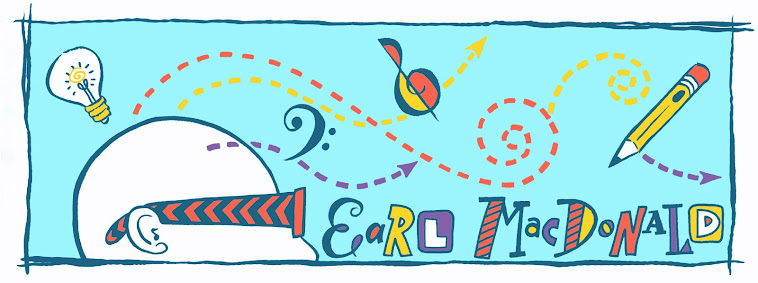"Dig In Buddy" is one of two tunes by Tyler Hornby, which I will be arranging for 17-piece big band over the next couple of weeks. The music and a recording from his "Shadows of A Brighter Day" compact disc appear below. Listen along as you scroll down to read my commentary.
In the early stages of planning an arrangement, I often find it helpful to list ideas which could be further developed. Here are my thoughts and observations when listening to the quintet version of this piece:
In the early stages of planning an arrangement, I often find it helpful to list ideas which could be further developed. Here are my thoughts and observations when listening to the quintet version of this piece:
- It has a real Art Blakey "vibe", in the hard bop vein (explosive at times, dynamic contrasts, blues-y yet sophisticated)
- Maybe I will expand upon this, making it even more Blakey-esque, using idiomatic 3 horn voicings. Perhaps I could go so far as to add a "Blues March" section.
- Strong features:
- the rhythmic element in the last 3 bars. This could be expanded (intro, "sound-offs", etc.). I like how the last measure functions as a "sound off" into the solos.
- The quiet first half of the head builds anticipation. It foreshadows something big about to happen in the 2nd half.
- The second half of the tune could easily be orchestrated to bounce around between sections or groups of instruments, like a group conversation (1 or 2 measure fragments). If I go that route, this conversational idea could be continued and expanded.
- Measures 4 and 8, when played up the octave (as written), act as a strong punctuation. To further enhance this effect, these measures could be orchestrated for full big band. I also like these measures played down the octave, as the horn players elected to do on the first repeat of the "in head". In some ways I actually prefer everything played down.
- The tempo would lend itself well to an Afro-Cuban 12/8 feel. Tyler almost goes there a few times.
- There are lots of chords. When developing the piece, some form of modal release might be welcome.
- C blues scale ideas are an easy, yet effective way to skate over the expanded C minor progression in the first 8 measures. Knowing this might come in handy when writing a soulful sounding soli.
- The piano player, Chip Stephens, plays some hip, lower register 5ths, alternating with chords at about 5:15 on the recording. Something like this could be expanded into a solo vamp, to create an alternate improvisational environment for one of the horn soloists.
- The last measure of the tune is incredibly strong, going into the solos. Coming out of this, I found myself wishing that the intensity would continue at the top of the form, into the solos. As the arranger, maybe I can play a hand in dictating how the soloists and rhythm section respond, so that the formal lines are blurred, thereby creating a more cohesive overall shape. Perhaps I will have the ensemble continue playing (well) into the solo form, extending the intensity created by the figure in measure 16.
Musicians, if you see/hear elements within this tune which I didn't list, but that really captured your interest and sparked your imagination, please let me know. It would be nice to have some interactive input from folks --- as opposed to just working alone in the black holed vacuum of my studio.
My plan for tomorrow is to come up with a formal outline/plan for the arrangement. It may change as I "dig in" (pardon the pun), but it should serve as a good entry point.


Earl,
ReplyDeleteI just started a new music theory class and one of my goals for the kids is to be able to read, write, and talk about music using common vocabulary. These posts will be great for us. We may send you some questions.
Perfect!
Delete